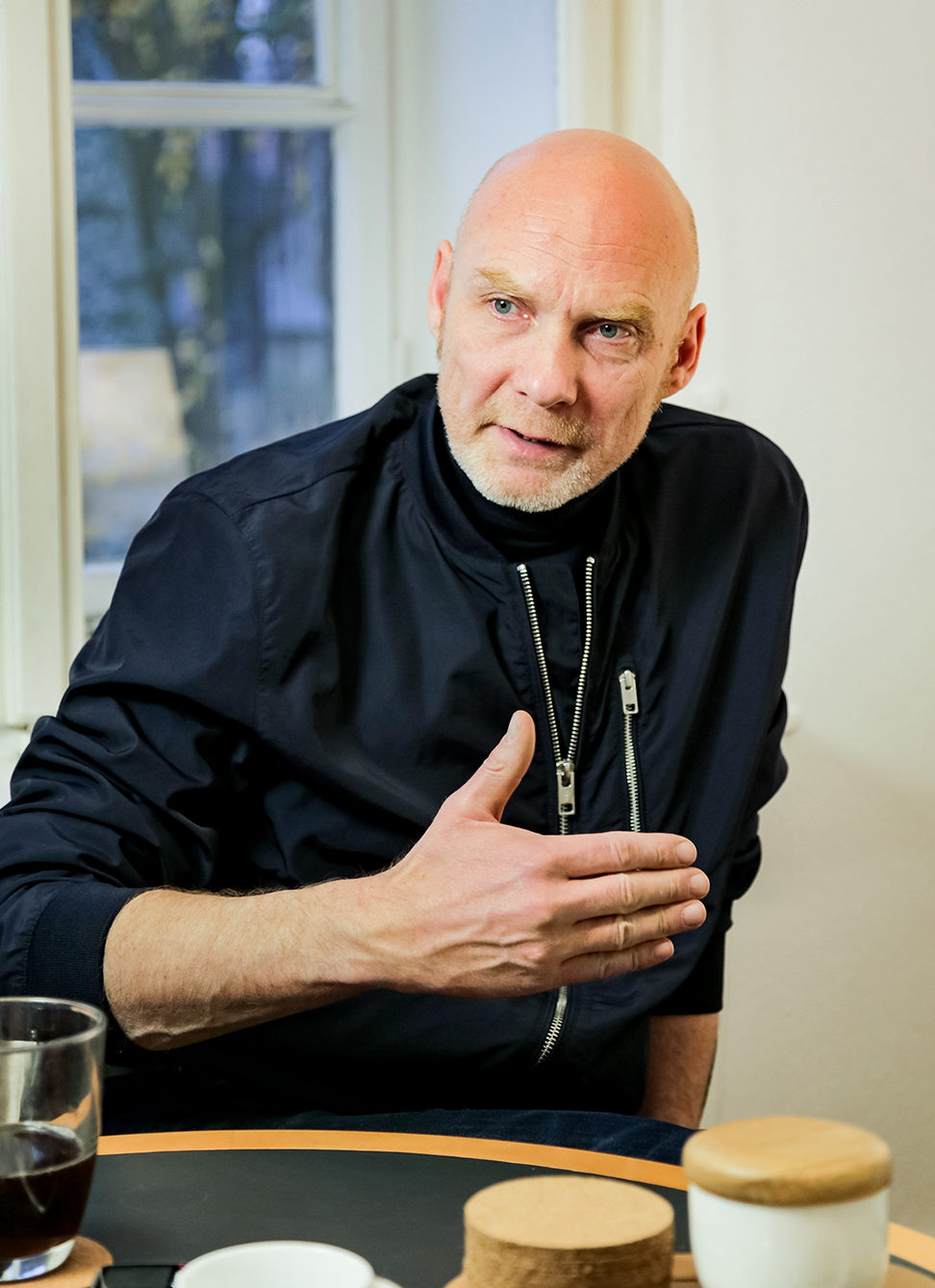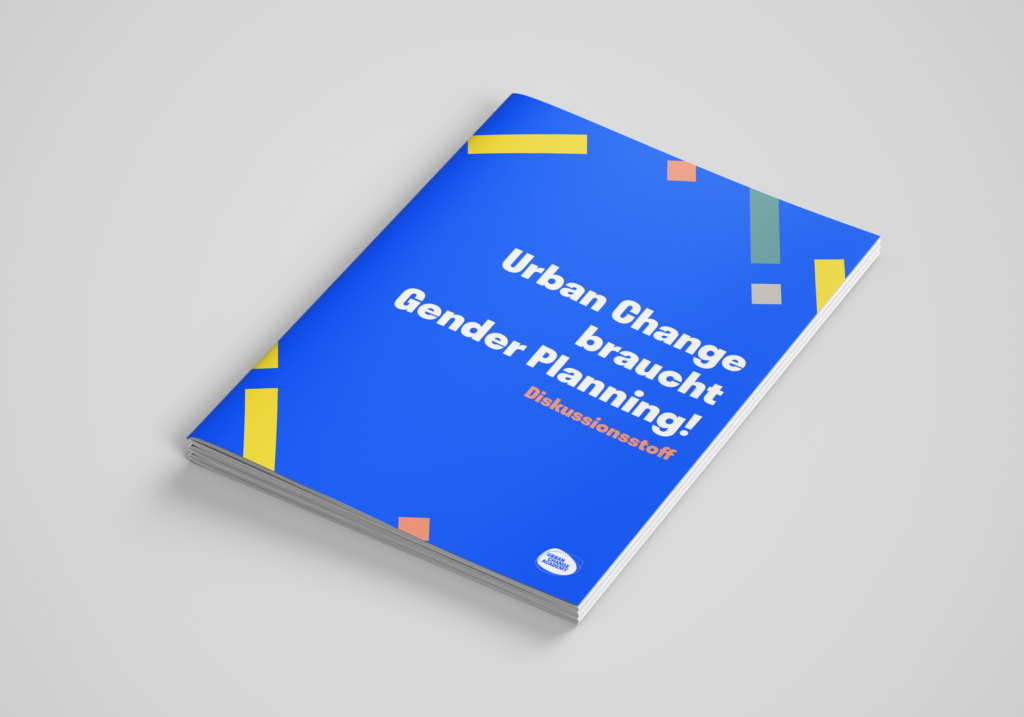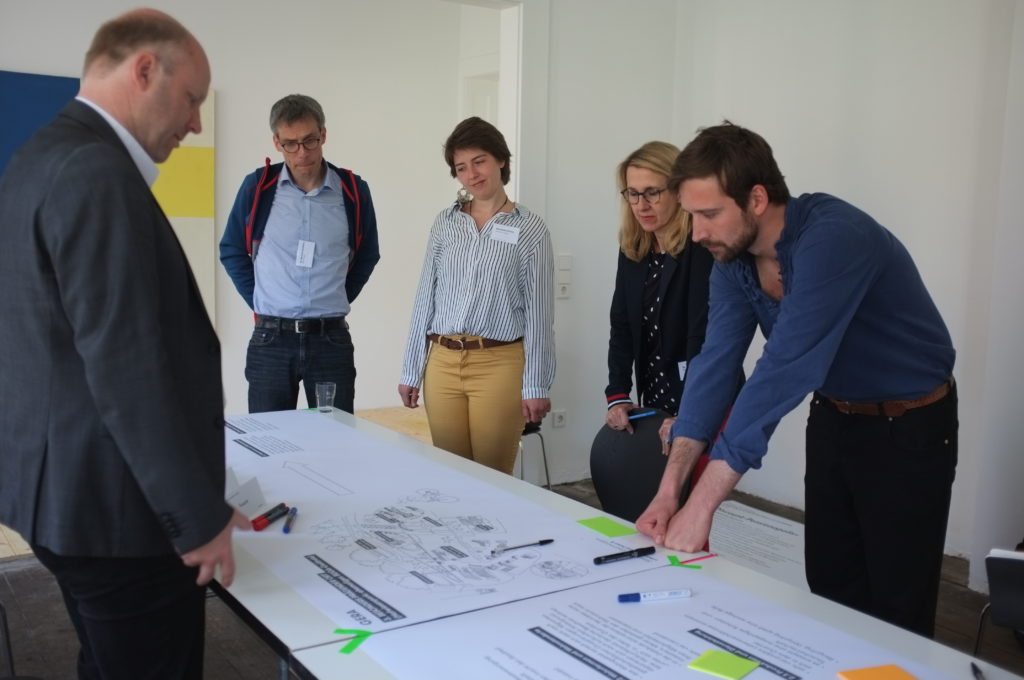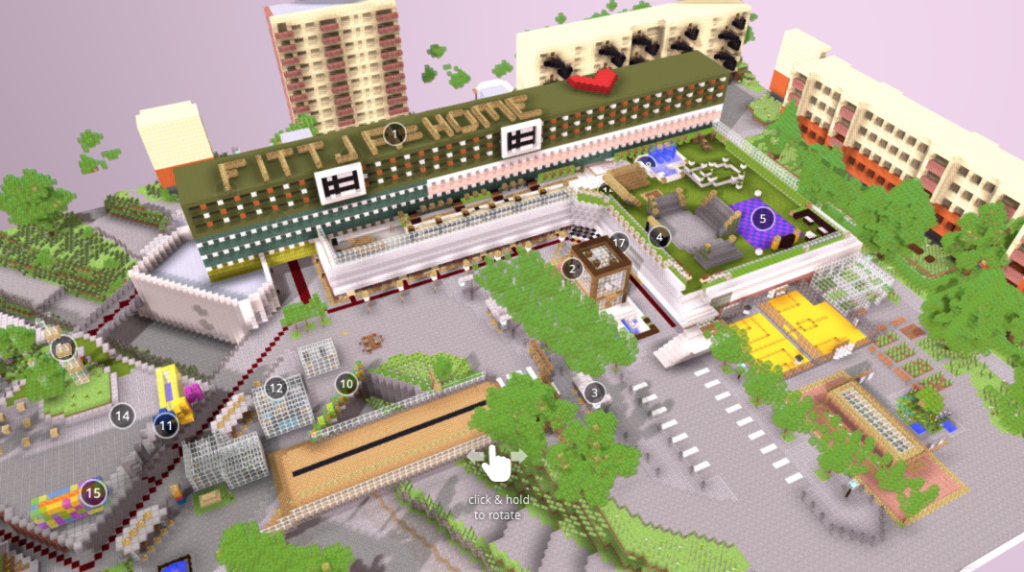The interview with Stephan Rammler took place on 21.09.2020. After a temporary stabilisation of the number of cases at a higher level, a further increase in Covid infections could be observed in Germany.
How has Covid affected your life? What changes have there been?
Stephan Rammler: I was a very active traveller before the pandemic, as I lectured all over the place, I enjoyed the fact that I didn’t even leave Berlin in the past six months because I didn’t have to. So, the raging standstill that Covid has brought, the standstill in the social and the personal. I experienced a springtime in Berlin for the first time in almost twenty years. I saw my children much more. I’ve seen my wife more.
Apart from that: it’s more intense. It’s denser. I’ve been working a lot.
We definitely share that observation!
How does the Covid crisis affect the way people deal with the topic of the “future”: Is it that people want to talk less about the future, or is the demand becoming much greater?
In times of crisis, the demand for augurs, prophets and crystal ball readers always increases. We have seen that since the beginning of the pandemic. Scenarios are often developed and sold that have no epistemological justification at all. These are pure branding things, where the desire of society to get positive images of the future is pursued. I find that very annoying.
In times of crisis, analysis and hope are needed. That is, I believe, our great task as science-based future analysts. The positive future, the positive narratives, that is, the view of the question of the future and what we can learn and change for the better, is part of it. But it’s also about being honest and not telling people about the unicorn that will supposedly make everything possible.
My perception is that many discourses about the future before the pandemic had a very dystopian character.
We talked a lot about the threat of change. In your perception, has this fear potential become greater because of Covid?
I don’t think there is any objective reason to be more optimistic than before. Covid basically just tore the veil off our eyes and pointed out some things that were relevant and correct before. And I think a lot of people have realised that. Covid came upon us like fate and forced certain developments and behaviours. The pandemic, just because we are forced to change right now, doesn’t really show us what we can achieve as a society. All the other issues that are now coming at us from the future have to do with voluntary and political decisions. The world has not changed fundamentally, but some things have become more difficult.
Personally, I think there is no reason for optimism at the moment, not in the slightest. I see many reasons for warning and dystopias, and the realistic picture of the future is actually more one that I would describe as a long emergency coming our way.
Climate change, resource scarcity and more – there are many challenges and major crises coming our way.
For my part, I almost feel a bit liberated. I am now allowed to speak more freely about dystopian scenarios than before. Before, you were always quickly accused of being an apocalyptic or dystopian, even if, as a scientist, you only put five or six empirical facts side by side. And that has changed. You can discuss things a bit more openly and freely without being attacked straight away.
How would you describe the status quo before Covid?
In Germany and Europe, we were actually driven and supported in the political and scientific debate by the synergy of these various mega-trends that are most important for mobility and urban development. Namely demography, urbanisation, sustainability transformation and digital transformation. In terms of mobility development, a lot has happened, especially in the cities. I would almost be positive about that. Especially in very progressive cities, we have seen that transformation is possible. That was the beginning of the work on a transport revolution. A transformation of mobility in Copenhagen, Stockholm, Amsterdam and Vienna.
Before Covid, did you already have the feeling that the dominoes were tipping over…
The ball was like a penalty in a football match, in many places the city authorities just had to put it into the net. That’s when public collective transport was modernised and digitalised so that it would continue to be the backbone of any form of sustainable mobility in the future. We have seen that mobility as a service can be wonderfully integrated if urban development policy does it well. We have seen that participation processes really make sense, and, and, and. So I would have said that the transport revolution was already under way, at least in a model way, in some European cities and also in California. And then came Covid.
Is Covid a showstopper in this respect?
I would say yes and no. Covid has shifted the scenery a bit on the stage on which the transport revolution is being realised. In other words, public transport has lost its at- tractiveness against the backdrop of the social distancing requirement. The result is a restabilisation of automobility. These are the two negative aspects.
On the other hand, we see an insane boom in cycling and cycling-based micro-logistics. We have seen a boom in micro-mobility as a whole. And we have seen the central topic of telecommuting emerge. It is surprising how quickly urban economists, urban politicians, but also real estate companies, are reacting to this and developing new concepts for teleworking, telecommuting centres for working from home. Vattenfall, for example, is currently building a corporate headquarters near Südkreuz in Berlin where a maximum of sixty per cent of the total workforce can still be in the building at any one time. This means that they are systematically counting on almost half of the workforce working from home. Covid has helped them tremendously. And the companies are seeing that they can save a lot of money in the area of international business travel. This will not come back to the same extent.
What can be done about the restabilisation of automobility?
The big task for public transport is to develop concepts that are Covid-compatible or pandemic-compatible. This is the question of the resilience of mobility in cities in the future. I believe that pandemics will continue to occur systematically. Basically, we were lucky for a long time. We all knew something like this was coming. I myself wrote scenarios many years ago that took this into account. Public transport, including the railways, must prepare themselves for the fact that pandemics will be a real structural problem for them in the future. That means with coated surfaces, with newly designed boarding and alighting stations, with good ventilation, with a form of new Covid etiquette. It’s about the question: How do I move and behave in public space?
As far as cycling is concerned, the existing infrastructures play a role. The fact that the Berliners and the Hamburgers have now been forced to dismantle their pop-up lanes is bad news, because it is one of the best “routine trans- formation nudges” we could think of. Especially for the people who didn’t dare to ride their bikes on the streets before. We must now massively expand and upgrade the infrastructure for cycling.
The situation in public transport is a terrible scenario for the operators. Many of them have beads of sweat on their foreheads at the moment because they say: We are only working at thirty per cent capacity or even less. Economically, we can’t keep that up for long. What is your assessment?
Does the state have to make available a few billion more to save local public transport companies from collapse?
I always distinguish between Covid as a burning glass and Covid as a field test. A burning glass means that it shows the asymmetries, structural deficits, distortions, inequalities that were already there before but that we either didn’t want to see or couldn’t see. It brings Covid up, in the health system and in the transport system. Social inequality is one of the issues that Covid has made very clear.
And then we have field test learning experiences, like the one with cycling or with teleworking. And we see as a society: “Oops, suddenly more is possible than we thought before.” Some of these learning experiences will remain. And then, on an abstract level, there are, of course, learning experiences or analyses that can be made. One that I consider quite central is that the strong, provision-oriented state has regained legitimacy after thirty years of neoliberal deregulation and liberalisation policies. Basically, the strong, precautionary, security-creating, resilient state is the postulate of the times. And the transport systems, above all public transport, are part of the systems of public services. I think we have to say this quite clearly: The state should view these systems even less than before in purely economic terms, but invest in them much more strongly with state and public funds in order to ensure a rudimentary form of urban livelihood provision in this area. And not everything has to be self-supporting in terms of costs. And I expect that these areas will not be further deregulated and economised.
Even before Covid, it was clear that we need a culture of experimentation, of field tests. The practical experience also shows that our regulatory systems, from road traffic regulations to local licensing authorities, do not have the necessary flexibility. Don’t we have to tackle the rules now, or is that dangerous?
No, it’s not dangerous. After all, this is a learning experience that I hope will happen soon and that we will discover and preserve for ourselves in view of what is coming from the future. Namely, in addition to a strong and precautionary state, to have an agile state that is able to break through its own path dependency, its own institutional routines and habits, its determinism based on legal solutions that were perhaps created a hundred years ago and are still in force.
What skills does the city need to develop further for this?
If the city is to fulfil its role as a preventive, caring and security-providing state, be prepared to abandon long-held institutional routines and habits that now act as a barrier. Every city is different. Every area is different. And that’s why it’s important that participation and discourse always take place at the municipal and regional level, because of course, the problems and solutions can only be brought about in this sense at the municipal level. That is why municipalities must be enabled, empowered, and equipped to solve their problems themselves.
That means that you would also see a strengthening of the municipalities through the Covid pandemic, or at least consider it desirable?
Yes, exactly. Before Covid, I was already of the opinion that the municipalities are actually the most decisive and relevant level of action for the future – now even more so. Because I believe that the future challenges cannot be met in the classical way as in the last sixty years since the end of the war.
Delegating problems to the state according to the motto “the state will solve this for me” will no longer work in the future. We need a much stronger willingness on the part of civil society to participate. That’s what I would like to see us rediscover. Communitarian, civic, social processes to solve problems are always good when they are locally or regionally bound. Because they have to do with proximity and social closeness. The community is simply the right place for this.
I would like to talk about the relationship between urban and rural areas. There seems to be hope that the pandemic can even out the differences between central urbanised areas and more sparsely populated, non-central areas. Precisely because of telecommuting, because of these new experiences that we have had, that we are suddenly willing to question our lifestyles that are focused on the city and on the metropolis.
We are indeed experiencing the urbanisation of the countryside, but only in certain cities attracting a younger population like Frankfurt, Hamburg, Berlin, Brandenburg. One should be wary of generalising in this area at the moment, because every city has different underlying conditions. Commuter relations in Frankfurt are different from those in Berlin, and different from those in Hamburg. And the abilities or opportunities for the urban middle class to move out of Berlin are different from those for the urban middle class to move out of Hamburg. Conceptually, of course, I think it’s a great idea. We’ve already had some hype on this topic in connection with automated driving. Now, I would like to pose the question: How is this supposed to happen when we don’t even have 5G networks and the digital expansion speed of the infrastructure is lagging behind?
So we are learning that infrastructure matters. And no longer in the old sense, but in the sense of modern services of general interest.
Yes, the digital networks will be an incredibly good basic infrastructure. If we had such systems, then we could operate completely different socio-technical embedding processes for every form of digital technology on this basis, whether it is automation technology in the production sector, in the transport or logistics sector or even telecommuting structures. But we don’t have them yet. And that’s why I’m sceptical.
What role do the structures in politics and administration play in this?
We have come from a time in which – to put it in societal terms – structure and functionality were basically the guiding principles. But now we are entering a time that is driven by climate change, where I would say: We need to develop the agile resilient state as a state that can offer very different solutions very quickly. What we need is exactly the opposite of what was necessary and correct in the structural-functional era, when the administrative apparatus ensured stability and security. In the classical sense of resilience, in the sense of springing back into the old situations. And now we are actually experiencing a redefinition. We call it transformative resilience. We believe that resilience is now only possible through change and adaptivity and not through stability-oriented structurally conservative behaviour. In this respect, the classic administrative politics, the classic structure of bureaucracy that we know, is exactly the wrong thing.
We are currently experiencing a major cultural, sociological, economic and political opening process, the likes of which we have not seen for three hundred years or longer. And it is precisely here that we need a kind of administration that is exactly the opposite of what we have had up to now. Whether it’s the universities or the city administration, we need an agile administration, and I would immediately say, for example, that everything that has been structurally put on a permanent footing up to now should be given a time limit.
We should set a time limit?
I think a big problem of this apparatus is its security, which is structurally dysfunctional to a certain extent. We need more of the creative risk-takers in the municipal administrations.
I think it would help us a lot to discuss goals more in the future rather than concentrating on known ways. I would subscribe to what you said earlier, namely that resilience means doing things differently.
And doing it permanently. What I’m trying to say is actually quite dramatic. I’m saying we’re going into a long emergency. By the way, this term comes from James Howard Kunstler, “The Long Emergency”, a book from the nineties which is highly recommended in terms of path dependency. I would argue that what we are experiencing right now is the beginning of a long emergency that we are entering as a world society.
Do we really have to define this as an ongoing crisis?
I always find that people are not able to deal with the concept of an emergency if one remains serious and persistent. I am always irritated why people immediately say: Why does it always have to be seen so negatively? For me, describing it in concrete terms like that is part of an analysis. I am not an apocalyptic who says – the world is coming to an end. I don’t believe that the world is coming to an end either. The world is far from coming to an end. The world is going to become very uncomfortable and that has to be said quite clearly.
These positive narratives, this telling of the world as it could be – I did that myself with “Schubumkehr”: “The world could be completely different. We just have to think differently.” I really think that’s opium, because I think we need hard-hitting analyses, and we also have to tell people. And against this background comes the conclusion that we need a resilient society that generates precisely this kind of permanent adaptivity, flexibility, willingness to change and makes it normal as the status quo.
Thank you very much.




